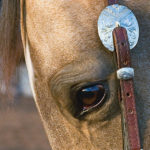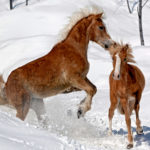 Credit: Thinkstock
Credit: ThinkstockCrib?biting and windsucking behavior in horses has been associated with increased risk of colic. The aims of the research, conducted in England, were to determine the prevalence of colic within a population of horses that display cribbing and windsucking behavior and to identify risk factors for colic.
Owners and/or managers of horses in England that display crib?biting and windsucking behavior were invited to participate in a questionnaire?based survey about the management and health of their horses. The prevalence of colic was calculated and used to identify associations between horse? and management?level variables for two outcomes of interest: a history of colic ever and a history of colic in the previous 12 months.
Data were obtained from 367 horses. One or more episodes of colic had been observed in 130 horses (35%). A total of 672 colic episodes were reported and 13 colic episodes required surgical intervention.
Increased duration of ownership,increased duration of stabling in the Autumn months (September through November), crib?biting and windsucking behavior associated with eating forage, and horses that were fed haylage, were associated with increased risk of colic.
Increasing severity (frequency) of cribbing and windsucking behavior and increased duration of stabling in the Autumn were associated with increased risk of colic in the previous 12 months.
The prevalence of colic in a population of horses that display crib?biting and windsucking behavior appeared to be relatively high. The results of this study can be used to identify horses that display crib?biting and windsucking behavior who are at increased risk of colic and identifies areas for further research to determine if there are ways in which this risk might be reduced.
For more information on this research, click here.
Summarized by Krishona Martinson, PhD, University of Minnesota. For more horse information visit the University of Minnesota Extension website.





